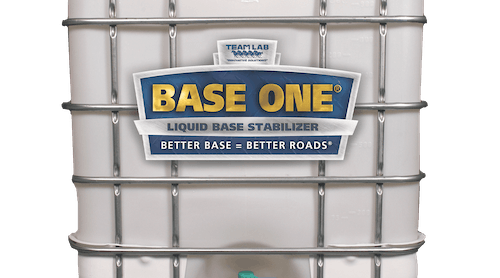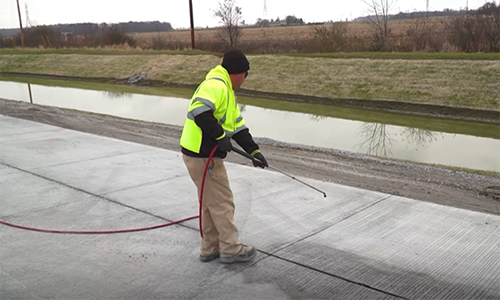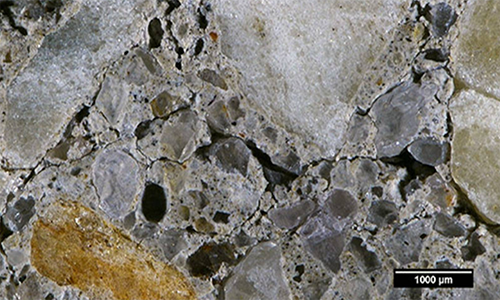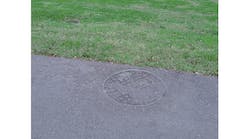By Jim Thompson, Contributing Author
North Carolina’s Mitchell County has several highways that snake through the Black Mountain range of the Blue Ridge Mountains.
The range’s peaks and valleys, in combination with the county’s heavy rainfall, present several safety hazards to motorists. They also pose a danger to road construction crews—a negligent driver could easily collide with professionals or equipment on a blind curve or a steep slope.
When it needed to resurface a stretch of highway in this region, the North Carolina Department of Transportation (NCDOT) wanted an asphalt chip seal that could provide safety for motorists during the project and far into the future. NCDOT also wanted to reduce the time crews spent in dangerous areas.
NCDOT chose an asphalt chip seal made from an expanded ceramic lightweight aggregate. This type of aggregate, often produced from shale, clay, or slate, has a high friction surface that improves skid resistance over its service life, making the highway safer in the long-term.
Additionally, lightweight aggregate provides superior particle retention because of its bond strength. This not only reduces required maintenance for rural roads, resulting in substantial return of investment to the county, but it also protects constituent vehicles during and after construction. Finally, due to the material’s low density, asphalt spreaders can more easily pull dump trucks up a grade, accelerating timelines and increasing the overall safety of a project.
But how does a lightweight aggregate deliver increased strength and performance capabilities?
Strength is commonly associated with heavyweight and solid products. Lightweight aggregate made from expanded shale, clay, or slate (ESCS) is low-density because of its unconnected network of air pockets. While common sense might suggest these voids would take away from what lightweight aggregate can provide, they are the key to the material’s high-performance qualities.
The voids allow oil to penetrate deeply, increasing bond strength. They also contribute to a high friction surface throughout the entire product. And for counties that experience ice and snowfall, lightweight aggregate can work as an environmentally conscious de-slicking grit due to its inert chemical structure. The following examinez the specifics of lightweight aggregate made from ESCS and how these details can meet the increased demands of rural roads.
Lightweight aggregate isn’t born, it’s made
To understand how lightweight aggregate supports safety on rural roads, it is necessary to first know how the material is produced. Unlike traditional aggregates that are quarried directly from the earth, lightweight aggregate undergoes several processes before it is ready to be used.
First, the raw material is heated to 2000 degrees Fahrenheit in a rotary kiln. During this step, it softens and air bubbles form. The bubbles remain as unconnected pores when the aggregate cools.
After heating and cooling, the aggregate is crushed and screened until the entire product reaches a consistent particle size. The ability for manufacturers of lightweight aggregate to regulate particle size sidelines rate adjustments that can be costly and time-consuming.
It also reduces accidental equipment damage caused by a large piece of aggregate, making the process more cost-effective and efficient. In fact, a 2017 return on investment report issued by Carbon County, Utah, indicated that lightweight aggregate’s low density and highly consistent particle size helped reduce labor hours needed to chip roads, contributing to a 52% initial return on investment, saving taxpayer money out of the gate.
Get a grip: increasing bond strength
The voids throughout the lightweight aggregate particles allow the oil sealant to penetrate deep into the aggregate mix. This, combined with a greater surface area to adhere to, increases the bond strength between oil and aggregate. In general, this mitigates raveling and typical wear and tear—prolonging the service life of the asphalt chip seal five-fold in some areas.
The increased bond strength also presents specific benefits to rural roads and highways. Large vehicles like semi-trucks and tractors can quickly cause damage to asphalt surfaces due to their weight and tire treads. Because rural areas often see more of this kind of traffic, their roads must provide long-term strength to lengthen the intervals between repairs and to increase the overall safety of the road.
For example, the Utah Department of Transportation (UDOT) used a lightweight aggregate chip seal to resurface two sections of interstate, totaling 20 miles. Representatives from UDOT reported there were no claims or complaints about vehicular damage from dislodged pavement during chipping.
Years later, there still were no areas where chips had peeled off or become dislodged. This decreased maintenance expenditures for UDOT while also increasing constituent satisfaction.
In the unlikely event that a truck, tractor, plow, or other vehicle kicks up a piece of asphalt chip seal, lightweight aggregate’s low density decreases the impact force of the dislodged pavement. Because force is the product of mass and acceleration, an object of lower mass will produce less force than one of a higher mass at the same rate of acceleration.
As such, lightweight aggregate’s low density decreases its mass and thereby its force of impact, decreasing the damage caused to windshields and other parts of a vehicle.
While the increased durability and longevity of asphalt chip seal made from lightweight aggregate can provide several safety and economic benefits to rural roads, some may wonder if it then requires more oil for the same amount of coverage.
Thanks to its 2017 report, Carbon County officials discovered their oil usage was 12% higher with traditional rock chip, and they were only able to achieve 30% retention. When the county shifted to lightweight aggregate, their oil use decreased and their retention increased to 99%, achieving an annual estimated savings of over $300,000.
All that’s polished isn’t gold: offering long-term skid resistance
In addition to reducing vehicular damage caused by dislodged pavement, lightweight aggregate provides a high friction surface that resists polishing, the process by which paved surfaces become smoother over time.
The air pockets that form as the material is heated and cooled create a rough surface. The micro surface texture imparts a higher initial skid number than other natural aggregates (like limestone, dolomites and gravel). In hundreds of tests conducted by the Texas Department of Transportation (TXDOT), lightweight aggregate outperformed other aggregates in initial skid resistance—doubling traditional aggregate’s skid number in some applications (see figures 1 and 2). A high skid number supports a vehicle’s ability to stop, potentially preventing collisions and saving lives.
As the figures indicate, lightweight aggregate also resists polishing over the course of its service life. This is due to the structure of the aggregate’s particles. The pores that initially increased the material’s skid number can be found throughout each particle. Unlike heavy rock chip that becomes slicker as it wears, lightweight aggregate’s rough surface is constantly renewed.
In 1992, the Center for Transportation Research reported results on an accelerated polish test using Test Method Tex-438-A for Polish Value (PV). The center stated, “The PV ranged from a lowest value of 25 for a crushed siliceous gravel aggregate to a high of 51 for ESCS aggregate.”
Due to lightweight aggregate’s ability to provide a higher initial and sustained skid resistance number in dry and wet conditions, it can help reduce the number of collisions and injuries that happen each year.
Given the Federal Highway Administration estimates over 544,700 people are injured in crashes on wet pavement annually, higher skid resistance is beneficial for all roads. However, it is especially important for rural roads. In these areas, lack of traffic and decreased cell reception may delay alerting emergency responders, limiting their capacity to provide life-saving assistance.
County officials should also note that the enhanced safety a high friction surface provides does not cause more noise. Road noise happens when tires trap air between themselves and the pavement. Lightweight aggregate’s unconnected network of pores allow air to escape, creating a noticeably quieter road surface.
True grit: de-slicking icy roads sustainably
Finally, lightweight aggregate can be used in ways beyond paving. One novel application is to use it as de-slicking grit for icy or snow-covered roads. Unlike salt-based de-icers, lightweight aggregate is chemically inert, meaning it will not react with melting ice or contribute to premature raveling to roads. This not only increases its ability to de-slick icy roads but also offers a sustainable alternative to traditional de-icers, which may drain into neighboring ecosystems as the ice melts.
According to a study from the University of Minnesota, runoff from deicing chemicals results in polluted groundwater. Chloride (a chemical found in most deicers) can change oxygen levels in lakes and waterways, as well as poison fish, aquatic bugs, and amphibians. Lightweight aggregate, when used as a de-slicking agent, sidesteps these issues, increasing road safety with a low environmental impact.
Furthermore, due to its low-density, lightweight aggregate will blow off the road under normal traffic conditions. This saves counties on costly sweep and clean up costs. It also reduces the amount of oil used and emissions produced by county vehicles, contributing to lightweight aggregate’s ability to de-slick roads sustainably.
Not just another rock in the road
Lightweight aggregate is a cost-effective means for rural counties to stretch their taxpayers’ dollars. Its unconnected network of air pockets creates a higher bond strength that leads to greater durability and longevity, reducing both repair costs and damages to constituent vehicles over its service life.
Those same voids also contribute to its high friction surface, which increases road safety. Because the aggregate has a low-density and highly regulated particle size, it contributes to work efficiency, reducing labor expenses and the time road crews must spend on dangerous stretches of highway.
Asphalt chip seal that incorporates lightweight aggregate also reduces time needed to lay pavement, the amount of oil used, and the number of trucks to haul chip. This provides counties with a substantial return on investment when they switch to lightweight aggregate chip seal. R&B
Jim Thompson is the sales manager for Asphalt Preservation at Carolina Stalite Company. Jim has over 40 years of experience working within the asphalt industry and currently serves as the Expanded Shale, Clay and Slate Institute’s (ESCSI) Asphalt Committee Vice Chair.














